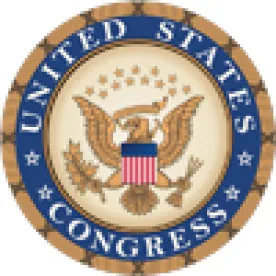The Obama administration has finalized a number of employment-related regulations over the past few months, including rules on overtime, worker benefits, paid sick leave for employees of federal contractors, and union elections. Additional regulations may be finalized prior to the commencement of the Trump Administration.
Finalizing a regulation does not mean, however, that it will take or remain in effect. This post discusses the Congressional Review Act (“CRA”), a unique legislative tool that the new Congress and Administration might use to undo some of these recent regulatory efforts.
The Congressional Review Act’s Unique Procedure
Congress passed the CRA in 1996, providing a mechanism for Congress to block significant regulations from taking or remaining in effect. Under the CRA, before a new regulation may take effect, all federal agencies must submit to Congress a copy of the final regulation and a report detailing why the regulation should be promulgated.
Under the CRA, all “major” rules – generally those rules expected to impact the economy by more than $100 million – generally cannot take effect until 60 calendar days after the regulation is submitted to Congress. Non-major rules take effect as otherwise provided by law after submission to Congress.
Once submitted, Congress has 60 “session days” or legislative days – days in which Congress is in session – to consider the regulation. If there are less than 60 “session days” in a Congressional session after receipt of the agency’s submission, the new Congress will have 45 “session days” at the start of its new term to consider the rule. During this period, Congress may pass a joint resolution of disapproval to present to the President.
Importantly, the CRA process does not allow the Senate to invoke the filibuster rule, so a simple majority from each house is sufficient to pass the resolution. When a joint resolution of disapproval is signed by the President (or Congress overrides a Presidential veto), the agency may not issue a new regulation in “substantially the same form” as the disapproved regulation, absent subsequent Congressional action. The CRA also prohibits judicial review of any “determination, finding, action, or omission” made pursuant to the CRA.
How The New Congress And Trump Administration May Use The CRA
Given its structure and timing, the CRA is most likely to be invoked during the change of a Presidential Administration. It would be a rare circumstance where a President would sign a joint resolution of disapproval regarding a regulation of the President’s own administration, and Congressional overrides of vetoes are also rare. In fact, the CRA has been successfully invoked only once, to overturn the Occupational Safety and Health Administration’s (“OSHA”) proposed ergonomics rule. OSHA promulgated the rule in the waning days of the Clinton Administration. In March 2001, Congress and President George W. Bush invoked the CRA to overturn the ergonomics rule. As a result, OSHA cannot promulgate a rule substantially similar to the ergonomics rule unless Congress passes a law authorizing such a regulation.
During the Obama Administration, Congress submitted five joint resolutions of disapproval for several rules. President Obama vetoed each joint resolution. Two of the joint resolutions involved employment-related rules: the Department of Labor’s fiduciary rule and the National Labor Relation Board’s rule regarding expedited election procedures.
The Congressional Research Service (“CRS”), in a recently released memorandum, estimates that any regulation submitted to Congress after May 30, 2016 could be subject to CRA review by the new Congress, depending on how many session days the current Congress holds during its “lame duck” session. Regulations that could be subject to action under the CRA include rules related to employment and the workplace, such as Department of Labor rules (1) regarding overtime (which has been preliminarily enjoined by a Texas court) and (2) requiring certain federal contractors to provide certain employees with paid sick leave. In addition, the Obama Administration may issue new regulations any time prior to January 20, 2017 that would also be subject to CRA scrutiny in the new Congress.
Conclusion
Companies should be aware of the CRA’s processes and stay abreast of regulations finalized during the final months of the Obama Administration, understanding that they may be subject to CRA review and reversal under the next Congress and Administration.




 />i
/>i

